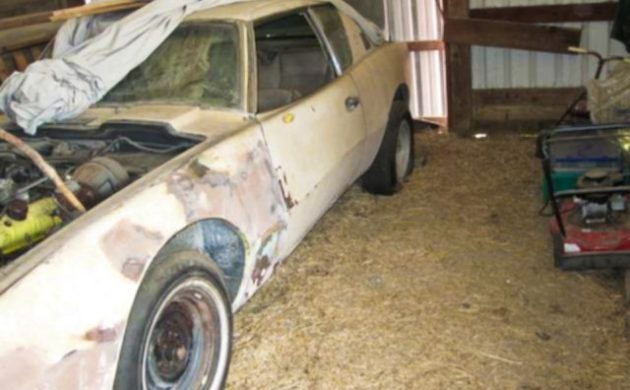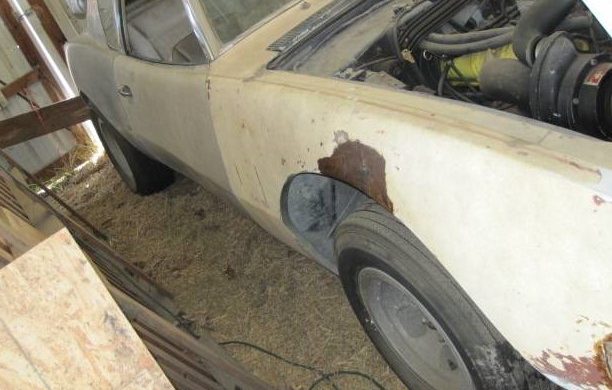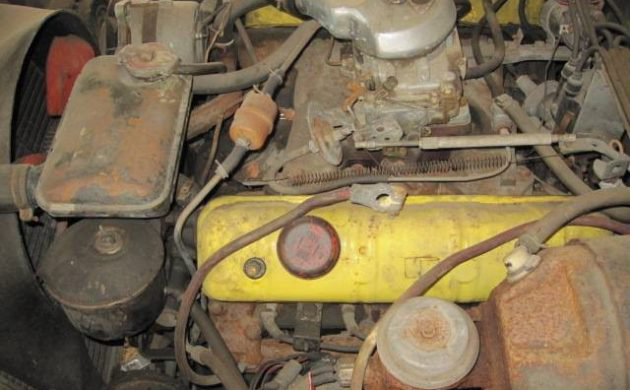Whether then-president Sherwood Egbert really thought the Avanti could help save Studebaker is debatable, but legend has it that the concept of the car was born on a cocktail napkin. Rushed into production in 1963, the Avanti never reached its full potential before Studebaker discontinued building cars in the U.S. This first-year edition is the R2, which stands for one having the McCulloch supercharger. The vehicle and its assorted parts have been in the barn for more than 30 years and will be a challenging project to resurrect. Located in Chattaroy, Washington, this Stude is available here on craigslist for $6,700 OBO. Thanks for another wild tip, T.J.!
By the early 1960s, the shot in the sales arm that Studebaker received when the compact Lark had been introduced in 1959 had worn off. Too many competitors were now in the compact game, so another miracle was needed for the automaker. Egbert had hopes of selling 20,000 Avanti’s a year, but only managed 4,600 copies before Studebaker’s South Bend, Indiana plant was shut down (right after Egbert retired). The Avanti used a fiberglass body styled by famed designer Raymond Loewy applied to a Lark chassis and drivetrain. For the 1963 model year, just 3,834 Avanti’s were built of which 1,552 were the R2 like the seller’s car.
The seller’s ’63 has been under wrap for more than 30 years. It’s not complete and what’s missing isn’t easy to determine because the car’s parts are scattered about. Some bodywork has been started with evidence of Bondo and primer on what we’re told was yellow paint at one time. A full cosmetic and mechanical restoration will be needed.
Studebaker’s 289 cubic-inch V8 powered these automobiles and we’re told that this one at least isn’t stuck from sitting. It ran when it was parked and then not touched much for several years (why does this happen?). The supercharger is a big selling point for the auto, and we hope all the hardware is still there. The engine is paired with an automatic transmission also of unknown condition. And some NOS components are going with the deal. Since not many of these iconic cars are left, it would be great to see this one on the road again, but is the challenge too great?






I saw the Fantomworks guys redo one of these a couple of years ago on TV. They had a rough time, as I recall. And I think that one drove into their shop.
Yellow was not an option for Avanti’s in 63. Gold was . https://www.theavanti.com/paint_colors.html
I so wish studebaker had made it along with packard such inovative designs and some things far ahead of the big three history now
The good part? The dash has not caved in and the hog troughs are good. This is a true 63 with the round headlights. The interior is not thrashed.
The bad part? The body could be a 15-20 repair. Not many people understand the wiring. And of course, as the author stated…hopefully that supercharger hardware is still there.
I’m concerned that this engine may be a regular 289 V8, as the R series engines came standard with chrome valve covers. This engine has the normal yellow painted valve covers as one would find on a non-R 289 engine. This could have unexpected problems, as the supercharged engine had lowered compression to handle the increased boost pressures. If this current engine is a regular [non R engine] 4 barrel equipped car, and someone uses the supercharger, it could cause catastrophic engine damage.
A possible buyer should check the engine number to see what it really is. Of course it may have replacement painted valve covers, but the question is; Why? A correct R2 engine is not easy to find.
Why was the post deleted by the author?
I would guess that the car sold.
If it sold, for how much? New to this site, but I’m not impressed.
My R2 in 1970 had a full chrome engine. The blower was orange. Some are black, and I understand from other posts, those have been rebuilt. I don’t know.
I blew a hole in my right tire fiberglass when a re-cap tire blew up. That was a real “project.”
This one looks the same, did a rear tire blow and tear out the right rear?